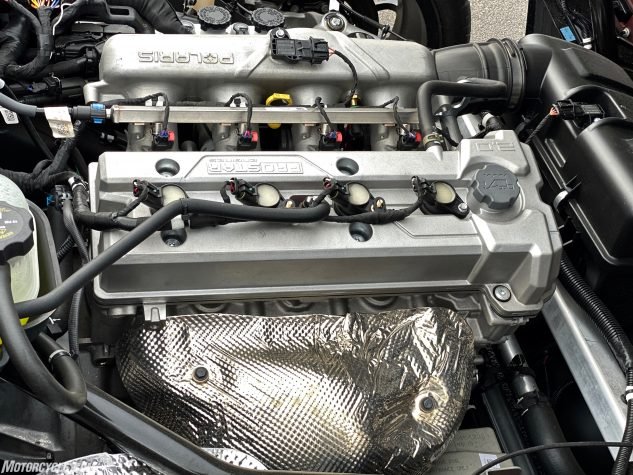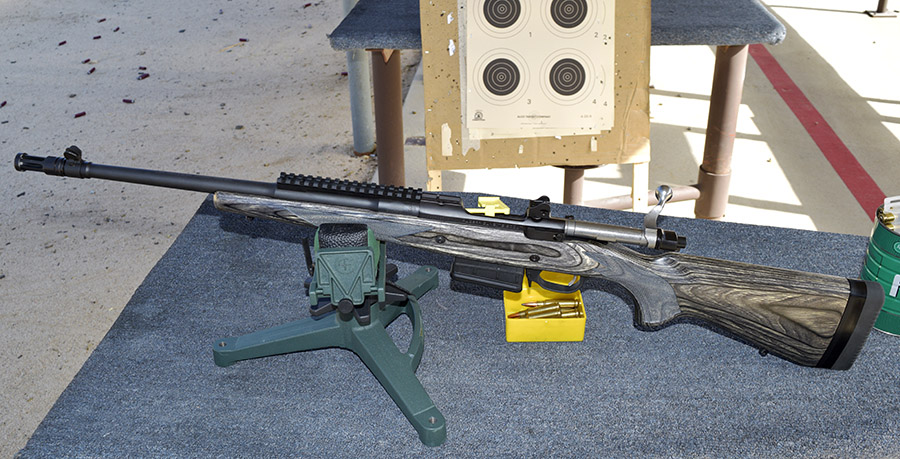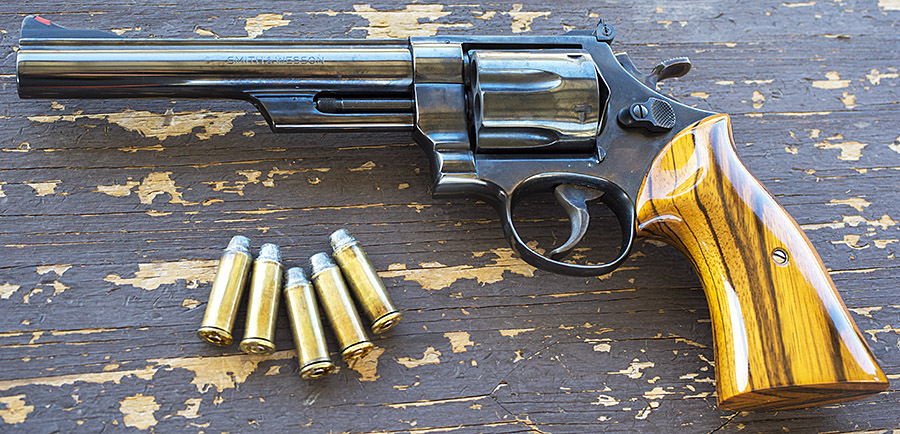Joe has a new story published on Motorcycle.com! Take a look when you get a chance. I’ve always wondered what it was like to ride one of these 3-wheeled wonders, and now I know.
Month: March 2020
The Henry is in California
I sure was surprised a couple of days ago. While sheltered in place, or locked down, or in self-isolation, or whatever the nom du jour is, I received an email from my local FFL telling me that my Henry Rifle had arrived. Wow, I didn’t even know it had been shipped yet! You know the deal…I’m here in California and I have to wait 10 days so that I can cool sufficiently before taking possession of the new rifle, but I wanted to get the process started. I made an appointment so as not to be around too many other people and off I went. Truth be told, it felt great just getting out of the house, and I felt even better when I saw the Henry .45 70. It’s beautiful.
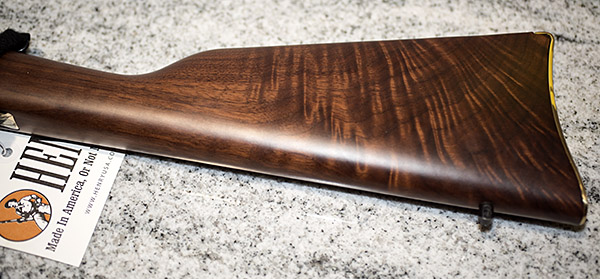
You can refer to our earlier blog for the first part of the Henry story. In it, I told about asking their marketing director (good buddy Dan) to try to get me one with a nice piece of walnut, and wow, did they ever! When I arrived at the FFL, the lighting at the store was not conducive to great photography, but I did my best:

What’s really nice about this rifle is that the stock is highly figured on both sides, and it is what I would call exhibition grade walnut. I’m guessing it’s American walnut, as Henry prides itself on being made in America. I’ve been collecting rifles for a good half century now, and I have some with really nice wood. The new Henry jumped to the head of the pack. It’s stunning.
I had hoped to have a more in depth chat with Dan this week, but like all companies, Henry has its hands full right now. That’s okay; we’ll get to chat later. What Dan told me earlier is that all these rifles are nice, and they are a cut above what one would normally see in a rifle in this price range. I think he’s being too modest. I’ve seen and I own rifles that cost two to four times as much as this Henry, and the fit and finish on those is not as nice as this. It truly is a beautiful rifle. My compliments to Henry USA!
I’ve already started loading .45 70 for the Henry ammo development effort, and I think the next blog will be on that topic. This is going to be fun, folks. I can’t wait to talk possession of the rifle and I can’t wait to start shooting it. I’m eager to see how the rifle performs, and I’m equally eager to get the Henry on the bench and out in the sunlight so I can get better photos for you…this rifle deserves it!
More Tales of the Gun can be found right here!
We’re going through a rough patch right now, and when I say we, I mean that literally. We, as in the whole world, are working through a terrible situation. But it will pass, and when it does, we’ll be better people. I’ve cut back substantially on the time I spend on social media for a lot of reasons, not the least of which is my deep disappointment in people who are using the current world health situation to post stupid stuff. But every once in a while you see something good, and this meme from Southern Pride and Dixie Proud was one of those rare occasions:
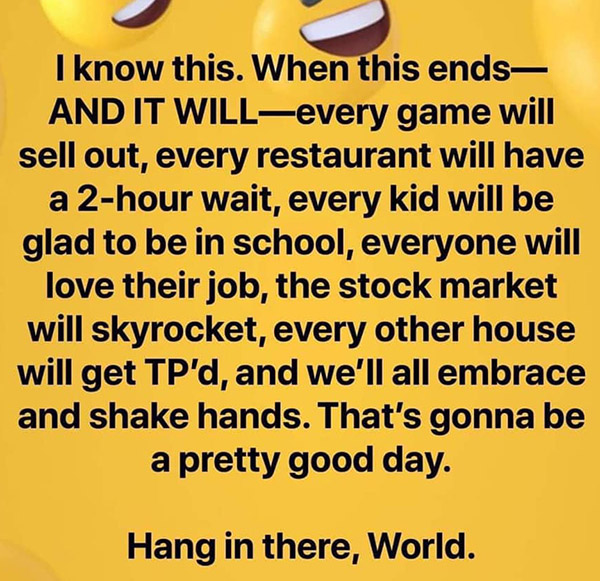
Chinese food, anyone?

Man, we are through the looking glass, living in what feels like a bad science fiction movie. The freeways and malls are empty, parking lots are empty, and we are sheltered in place. To top it all off, Susie and I are recovering from two of the worst colds we’ve ever had, and you can imagine what we’ve been imagining. And it may have all started because some dude in Wuhan wanted to eat a bat. A bat!
This current situation will bring out the worst in us, and it will bring out the best in us. We’re already seeing some of the worst, with the accusations flying back and forth about where the virus originated, who did what to who (or who failed to do what and when), and on and on it goes. But we’ll get through it, and we’ll come out on the other side better. We always do.
I have good friends in China, and I feel for them. I think I feel for us, too, with the COVID-19 virus emerging here. The market is way down, on paper we’ve lost a ton of wealth, and people are losing jobs. I had a gig in Singapore and I would have been heading over there. Nope. Not now.
All the above aside, I find myself thinking more and more about my friends in China, and the ride Joe Gresh and I took across China. And the food we ate (we ate a lot of strange stuff, and a lot of watermelon). And the pretty girls. And the roads and the people. This summer it will be four years since that ride. It was the grandest ride I’ve ever done and the greatest adventure I’ve ever had. With that as an introduction and without a lot of narrative, I’ve got a ton of photos to share with you from that epic road trip. Enjoy, my friends…



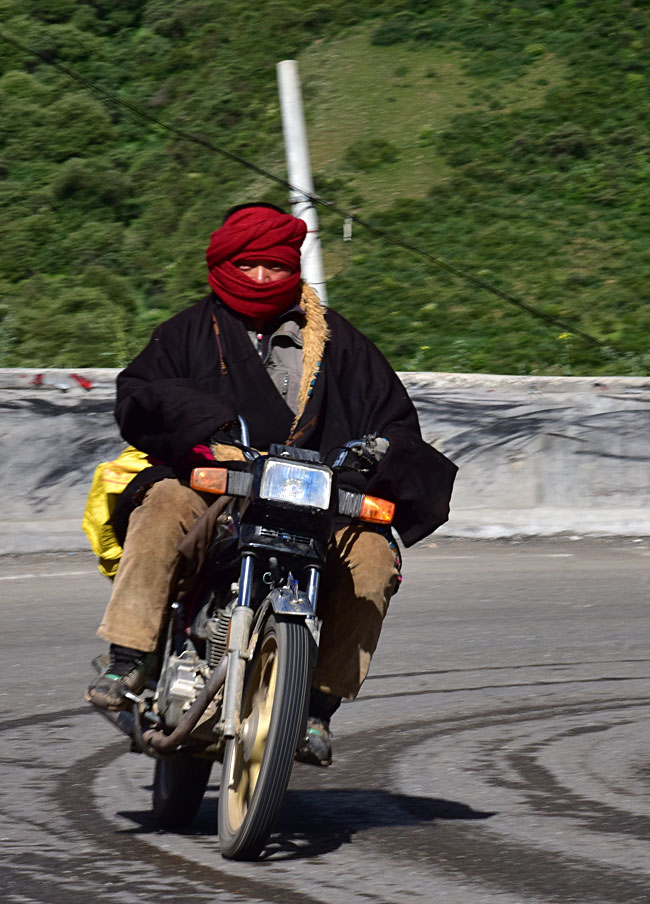










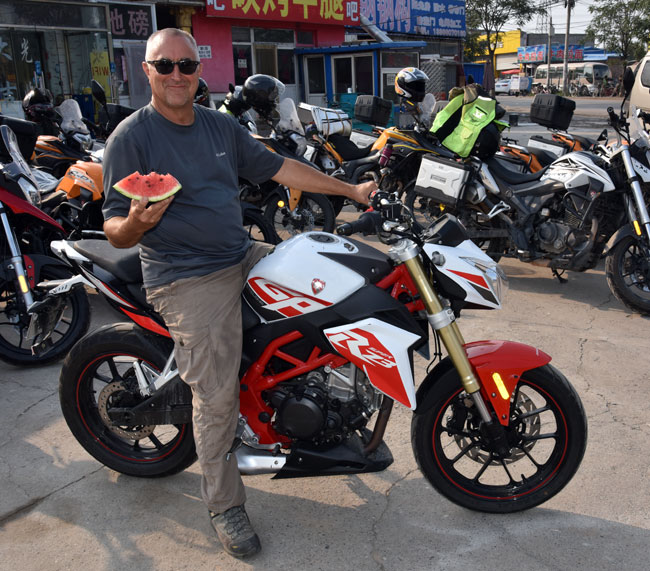










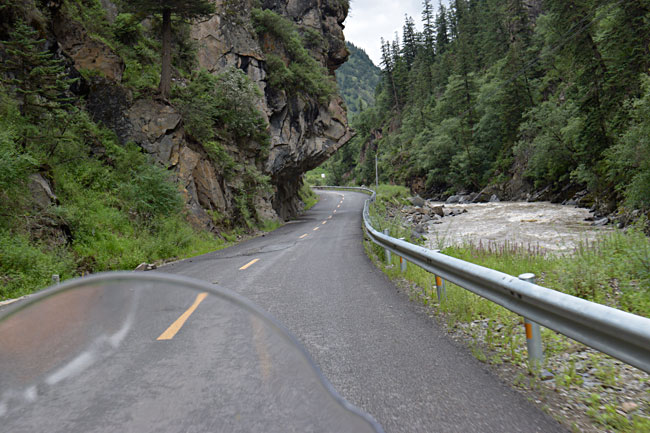
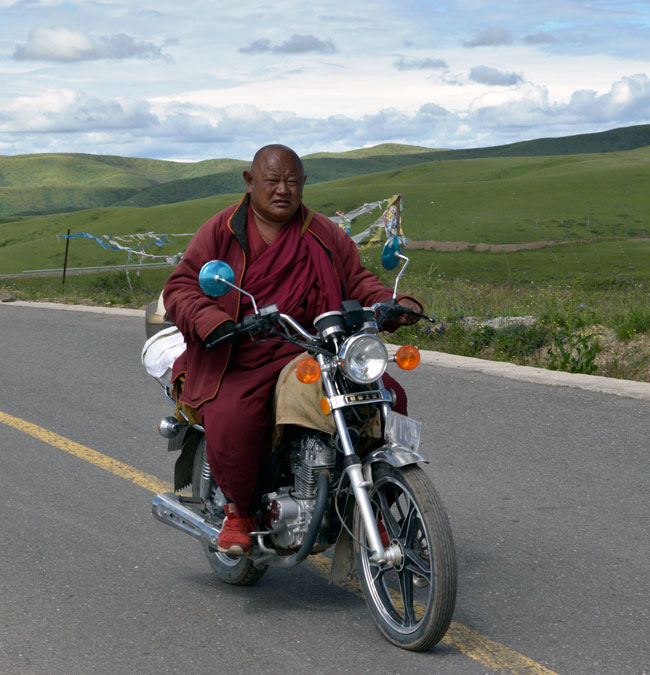






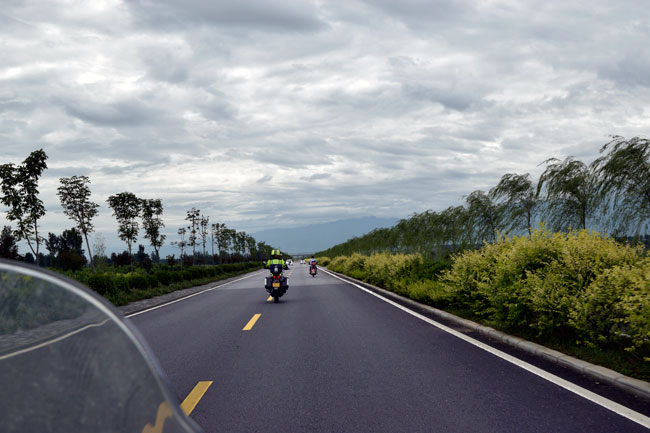



Riding China was a good ride. I’d like to do it again someday. In the meantime, keep the faith, folks. Things will get better.
Ruger’s .308 GSR Rifle
The story today, boys and girls, is about Ruger’s Gunsite Scout Rifle, or as Ruger calls it, the GSR.

To keep a short story short, here’s the bottom line: This thing is one of the most accurate iron-sighted rifles I’ve ever owned. To make a short story a little less short, I have to tell you the rifle’s background and a bit about how my good buddy Jim Wile (rest in peace, Jim) and I came to buy our GSRs.
A long, long time ago, in a far away galaxy, there was this guy named Colonel Jeff Cooper who sort of became a god among mortals on all things gun related. Cooper had a lot of good ideas on handguns and was well published in his field. The Colonel started a shooting school (it still exists) that teaches marksmanship and tactics in Arizona called the Gunsite Academy (attending one of their classes is on my bucket list; good buddies Marty and Rex have done so). The good Colonel also had a few ideas on what would make a good scout rifle, with his concept being something light, accurate, short barreled, chambered in a respectable cartridge, and capable of mounting a low-powered scope with lots of eye relief. The idea floated around in the gun world for a few years, Steyr produced an overpriced rifle meeting the criteria, and then Ruger picked up the concept. About a decade ago, Ruger introduced their GSR, chambered in .308 Winchester (the 7.62 NATO round). At the time, they retailed for about a thousand bucks. That’s a lot of money, but as you know, I know people. Jim and I got our GSR rifles for $800 (a pretty good deal, I think).
Jim Wile and I bought the GSRs at the same time while shopping under the influence. I had lost a couple of teeth (sometimes this happens in political discussions, sometimes it happens as we grow older, and sometimes it happens in motorcycle crashes; I need not go into the details of my toothlessness here). I was getting a new implant (yep, I have a couple of fake teeth), and that required oral surgery and anesthesia. Good buddy Jim drove me to the oral surgeon and I was still half looped from the anesthesia when we got back to my place. We’d been talking about these new Ruger GRS rifles for a while, and I guess I called a woman I know at Turner’s. I can’t say I wouldn’t have done it if not under the influence of the tooth doc’s elixers, so I won’t, but to keep this story from growing too long, I’ll just say I was a little surprised when Jim told me the next day what we had done. Ten days later we both owned new GSRs.
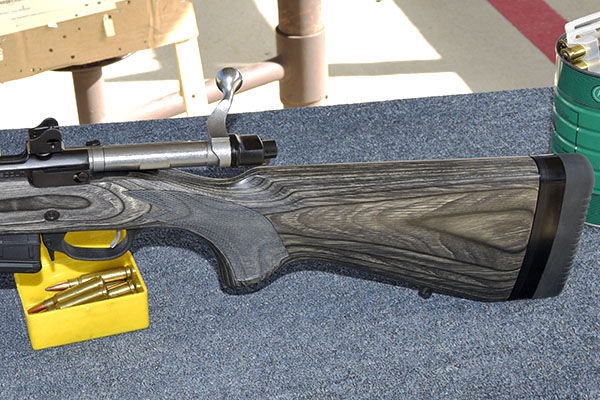

They are cool rifles. The GSR rifle has a Parkerized finish (which made it an immediate winner in my book), a laminated stock, scope rings and a Picatinny rail, and a couple of recoil pad spacers so you can increase the length of pull to adjust it to what you like. I didn’t put my two spacers in; I liked the rifle as delivered with its short stock. The rifle had two 10-round metal mags that rattled a lot; I bought a plastic 5-round mag and that’s all I use (I like the sleeker look and the fact that it doesn’t rattle). I don’t need 10 rounds. Five will do just fine, thank you.
I don’t shoot the GSR that often, but I like it a lot. It is a comfortable and handy rifle. If I had a truck it would be a truck gun.
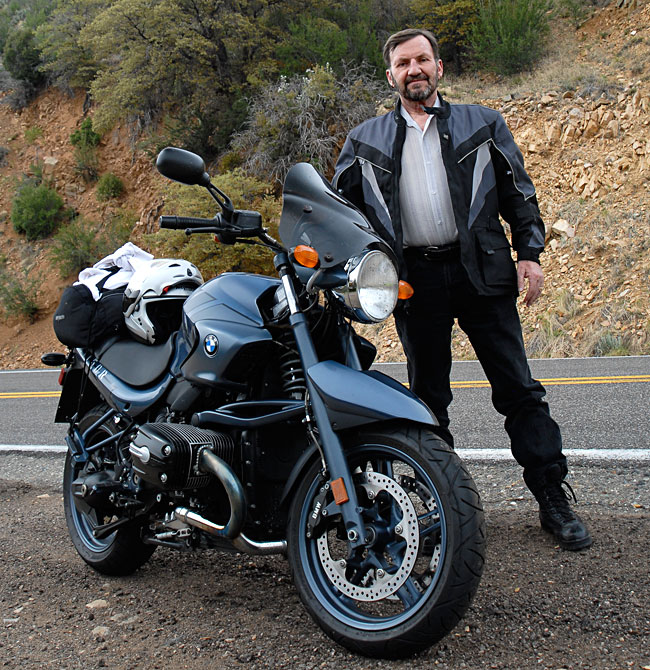
Before Jim went to his reward, he and I spent a lot of time doing the things God put us here to do, which is to say we covered a lot of miles on our motorcycles and we spent a lot of time at the gun club sending lead downrange. On one of our trips to the range, Jim brought along a sheet of bulletproof glass. I was kind of floored when he pulled it out of his car and told me what it was. Bulletproof glass? Bitchin’! I’ll take that challenge!
That big old pane of superthick glass was the same stuff you see in banks. Before he retired, Jim owned one of those PayDay advance stores and I think the state required him to use bulletproof glass. Or maybe Jim just thought it would be a cool thing to have in his store. Whatever. It was a good inch (at least an inch) think and the pane was about 15 inches tall and 3 feet wide. Maybe it was designed to go on top of a counter. It had a real light greenish hue to it. If you’ve ever been in a bank, you’ve seen this stuff.
You can probably guess where this story is going. Yep, we set that pane up, leaning against a rock, about 50 feet out and went to work. Jim started shooting at it with a .357 Magnum Ruger SP 100 revolver. Pew! Pew! Pew! You know, just to see if it really was bulletproof. I mean, he had owned it for years, and I suppose ol’ Jim had been wondering for a long time. Just curious, man. Big kid stuff. And that’s what we were that day. Two kids in their 60s shooting at bulletproof glass. If we had been 50 or 60 years younger, we would have been blowing up model cars with cherry bombs. This day was devoted to shooting bulletproof glass, just to see if it really was. Bulletproof glass. Let’s check it out!
Jim’s .357 bullets didn’t even dent that glass. We looked at the pane’s surface up close, and we could maybe see a dust shadow where the .357 slugs had flattened. But they didn’t penetrate or mark the glass at all. This was cool stuff. It really was bulletproof. If I worked in a bank, I remember thinking, I would have felt pretty good about all this, hunkered down behind that green translucent armor. John Dillinger? No big deal. Bulletproof glass, see?
Okay, I thought, enough pussy-footing around (can you even say that any more?). It was time to call up the heavy artillery. I loaded the Ruger GSR with one of my .308 cartridges using a 173-grain full metal jacket bullet and drew a bead. You know, just to see what would happen. Sight alignment. Front sight focus. Breath control. Concentration. Slow, steady squeeze, and BOOOOM!!!
You know, a .357 Magnum is a powerful handgun, and you can sort of feel its power in the air when a round lights off. But when you hear a .308 rifle let loose, there’s no comparison. It’s God calling, and He wants to talk to YOU. You damn well better be paying attention. Firing a high-powered rifle, you see, is a religious experience.
The result? The .308 went through the “bulletproof” glass like it wasn’t even there, with severe spall on the exit side. It made a .30-caliber hole going into the pane and left a two-and-a-half-inch conical hole going out. And that 173-grain copper-jacketed-boat-tailed projectile probably didn’t even notice what it had just whizzed through. Good Gawd!
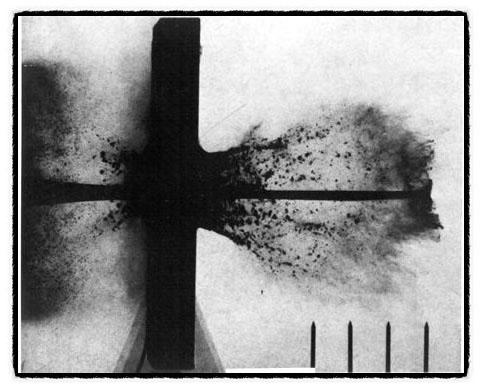
So, about that spall thing: Spallation is what happens when a high-speed projectile encounters a brittle barrier. It’s a cone of material that splinters into whatever you are shooting. You’ve probably seen this without realizing what you were looking at if you’ve ever seen a window shot with a BB gun. It’s the conical shaped hole on the opposite side of glass, the glass that shatters and flies in the direction of the BB (don’t ask me how I know this; let’s just say there were a lot of windows where I grew up that displayed classic spallation, and leave it at that). Spallation is the same physics effect that does most of the damage in an enemy tank when you hit one with an antitank warhead (the tank’s armor “spalls” into the interior of the vehicle and completely ruins the rest of the day for the crew). It’s what you see in that photo above.
Anyway, seeing that coned-out “bulletproof” pane really opened my eyes to the tremendous power a .308 rifle has over a .357 handgun. Yeah, it was bulletproof glass, but only up to a point. Bring enough gun, and bulletproof don’t mean diddly squat (“diddly squat” is a munitions term meaning of negligible value). And while I’m expanding the lexicon here, I guess I’ll mention that “bring enough gun” probably applies to a lot of situations. In this situation, bulletproof glass was no match for the Ruger GSR. If I had been thinking, I would have grabbed a photo or two of that pane, but I wasn’t and I didn’t. I was thinking if I was a pencil-necked geek of a bank teller and Dillinger walked in with a .308 rifle, I would probably pee my pants.
The bulletproof glass engineering evaluations aside, I had my Ruger GSR and you know I had to start testing its accuracy with different loads. What I noticed right away is that the rear aperture sight on my rifle didn’t have enough range of adjustment. With the rear sight cranked all the way over to the left, the rifle still shot to the right of my point of aim at 100 yards. I thought maybe I could compensate for it with the right reload, but I couldn’t, so the rifle went back to Ruger. They had it back to me in a couple of weeks after hogging out the stock to completely free float the barrel, and the problem was gone. I thought they did an amateurish bit of woodworking on the warranty repair, but it sure did the trick. The GSR shot to point of aim with the rear peep centered on the rifle. I went through my standard load development program with a variety of loads and propellants, and one stood out. Here’s the target I shot with it:
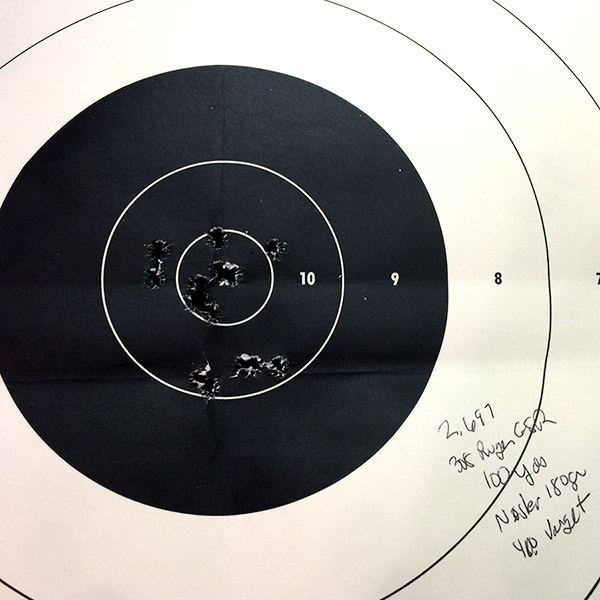
The load for the target you see above used 180-grain Nosler jacketed softpoint boattail bullets (their Part Number 27567), a 2.800-inch cartridge overall length, no crimp on the bullet, 40.0 grains of Varget propellant, a CCI 200 primer, and Remington brass. The Nosler bullets are expensive, as I recall. I had them on the bench for probably 20 years or more and I just decided to use them up as part of the load development for the Ruger. I still have a few left, and when I use them up I’ll buy more.
The Ruger GSRs list at around $1200 now on the Ruger website (the typical retail price is about $1000), and you can still find good deals on them. I’ve seen the .223 GSR go on sale for as little as $599 at Turner’s, our local gunstore chain here in California. That’s a hell of a deal. They are offered in more calibers, too, including the new 350 Legend and the 450 Bushmaster (two cartridges with which I have zero experience, but they sure seem cool). The other calibers aside, the .308 is still the king in my opinion, and I sure can’t argue with its accuracy. These are cool guns. You need one. Colonel Cooper was right.
Don’t forget: Click on those popup ads!
More Tales of the Gun here!
CSC’s Electric Bicycle Videos
We’ve previously posted info on CSC’s electric bicycles, and in the last few days a couple of super videos popped up on the new CSC products. One is from good buddy Kevin Duke, CSC’s Brand Manager, and the other is from Micah Toll, an expert on EVs of all kinds. Enjoy, my friends!
The FT750s are available in Gloss White or Matte Black. You can order one via CSC-ebike.com.
Interesting Times
I wish I had a few words of wisdom for everyone concerning this COVID 19 thing, but I do not, other than to say we’ll get through this, don’t hoard, and wash your hands. That’s the extent of my advice, so let’s get on to lighter stuff, which I could sure use a good dose of these days. Good buddy Duane sent a link for an Enfield story to me a day or two ago from Bloomberg news. When I saw the source I thought perhaps Duane had gone over to the dark side (you know, Bloomberg and all), but I guess even egomaniacal billionaires like Mike (who obviously didn’t make it happen) find an acorn once in a while. This is a story on the new Enfield, and they did a pretty good job with it.
Then another Enfield story popped up in my Facebook feed with a very cool Enfield video. It’s light, I enjoyed it, and it pretty much sums up my feeling about motorcycles these days:
Enjoy, folks, and keep the faith.
Henry Rifles: Made in America or not made at all…

About four years ago I went to the range with my good buddy TK. TK is a cool guy and he had a rifle I didn’t know much about. It was a new .44 Magnum Henry lever action rifle with a brass receiver and, in a word, it was stunning. The brass and the bluing were highly polished, the walnut stock was highly figured, and wow, was it ever accurate. I’d seen Henry rifles before but I had never handled or fired one, and when TK let me shoot his…well, let me put it this way: Wow! TK was impressed with my marksmanship and so was I. I put five .44 slugs through a hole you could cover with a quarter, and folks, with open sights, that’s good shooting. The rifle looked, felt, handled, and shot the way a rifle should.
Just a couple of weeks ago, good buddy Greg and I were on the range again and Greg had a new toy. He had recently purchased an older Harrington and Richardson break open rifle in .223, and it was nice. Harrington and Richardson stopped making their rifles some time ago, and I always thought having one in .45 70 would be the right thing to do. But I had never gotten around to scratching that itch. Maybe it was time to do something about that, I thought.
I like the concept of break open rifle, and I love the concept of a single shot. They are just cool. You have to make every shot count, and that’s appealing to me. A Ruger No. 1 or a Ruger No. 3 single shot rifle has always been my first choice. There’s something about a single shot rifle that floats my boat.
Seeing Greg’s H&R single shot .223 got me to thinking about Henry rifles again, probably because I’d seen something on the web about Henry having introduced a new single shot. I remembered the quality of TK’s Henry, and I love the break open configuration I was seeing on Greg’s H&R. It reminded me of my very first rifle…a .177 caliber pellet gun I’ve had since I was a kid wandering the woods in New Jersey. What I had in mind was a Henry single shot rifle with a brass frame chambered in .45 70 (one of the world’s all-time great cartridges). Throw in some fancy walnut, and it would be perfect. It would be just what the doctor ordered.
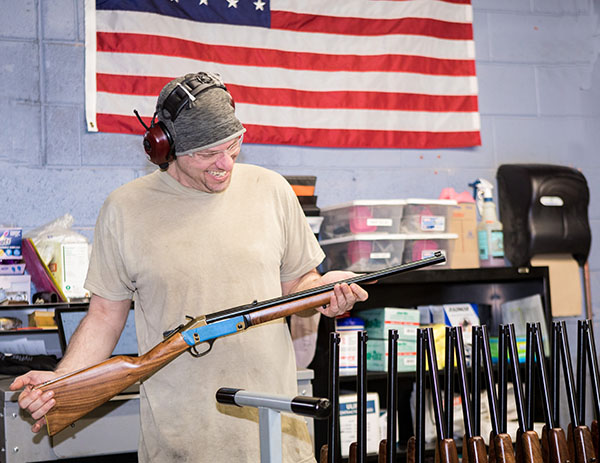
Hmmmm. Brass. Walnut. .45 70. The wheels were turning, and that prompted a visit to Henry’s website. What’s this? A contact form? Hmmmm again. Would it be possible to get a Henry Single Shot in .45 70, brass framed, with hand-selected walnut? Well, it seems the Henry folks had checked out our ExNotes gun page, and the answer was swift: Yep, they could help me on this.
So, to make a long story a little less long, I’ve been corresponding with Henry USA and I bought one of their brass frame single shot rifles. The good folks at Henry assured me it will have nice walnut. I’m talking to the Henry marketing director to learn a little more about the company tomorrow and I’ll be posting a blog about that in the near future. I’ll soon have a new Henry rifle in the ExNotes armory, and you can bet I’m going to have lots to say about it.
Stay tuned, folks. You’ll read all about it right here.
Check out our Tales of the Gun!
Hasty Conclusions: First Test of The British Motorcycle Gear Mercury Jacket
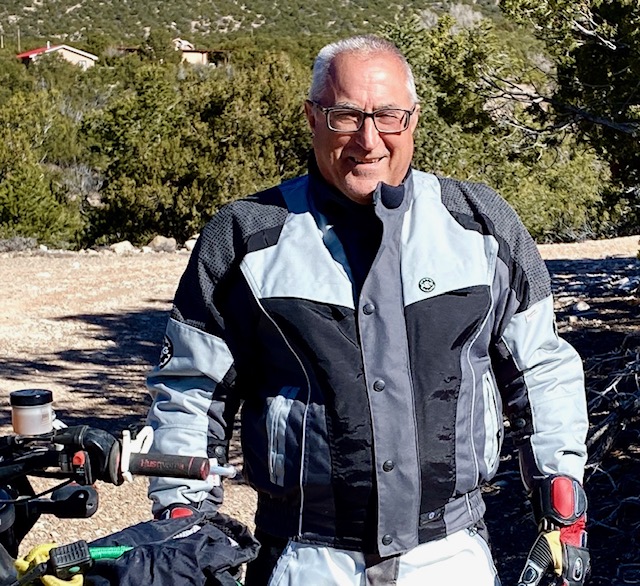
Here at Exhaustnotes.us we don’t have to wait until we know what we are talking about to give you our impressions of new gear sent to us for review. No, we can do whatever, whenever we want and right now I want to tell you about this swell jacket. You’ll get a longer-term review after Daytona Bike week.
BMG’s Mercury jacket is warm. The thing comes with a liner made of something like plutonium or krypton. The (only) day I tried the jacket temperatures ranged from 45 degrees to 70 degrees Fahrenheit. My base layer was a cotton T-shirt, no logo. At 45 degrees I was a bit cold but nothing unbearable. As the temps got into the high 60’s low 70’s the jacket became warm. It was fine as long as your speeds were above 40-50 miles per hour.
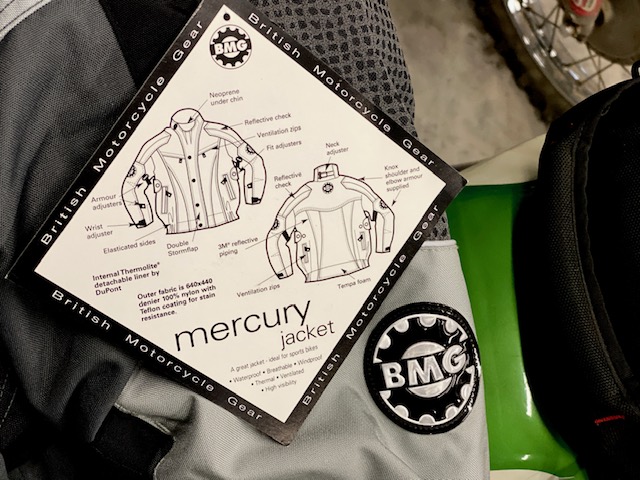
I could have taken several steps as the weather warmed up. I could have taken the liner out. I could have opened the vents (which I did later on) but I’m lazy and just put up with the heat.
The collar on the BMG Mercury jacket is designed well. I can lock it in solid and it doesn’t chafe on my helmet when I rotate my head to preen. Some jackets catch helmet parts and make cleaning tail feathers a less rider-friendly operation.
The sleeves have both a zipper and hook-and-loop fasteners strips to seal off your wrists. This is great for me because I ride without gloves when I am operating a camera or getting on and off the bike frequently. Using the two closing methods you can achieve an airtight wrap and stop the cold from entering your arm area.
Closing the jacket is also a multi-level affair; a zipper, hook-and-loop strips then snaps should pretty much keep the coat from opening up in a crash. The jacket has light shoulder/elbow armor that doesn’t intrude on comfort. Which is fine by me, I don’t like heavily armored motorcycle gear.
There are two front and two rear vents that are not huge but when open make the jacket noticeably cooler. After getting a bit hot on slower trails I ran them open until around 5pm when New Mexico’s February temps start dropping. I closed the vents and had a snug, evening ride home, arriving back at Tinfiny Ranch around 55 degrees, the perfect temperature for using the Mercury fully deployed.
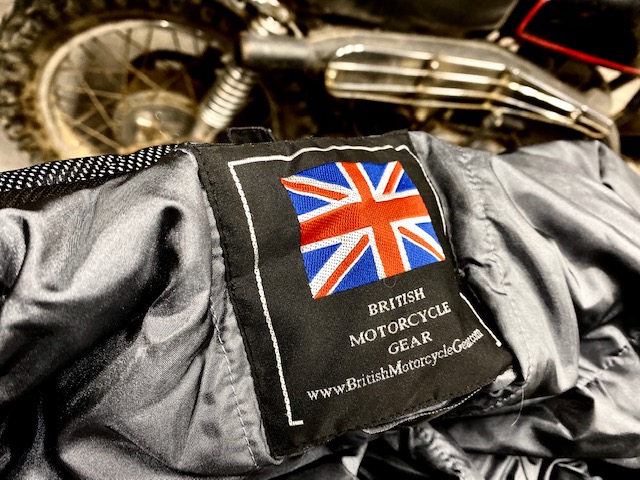
The Mercury comes with a lot of adjustable straps to control the shape of the thing. I didn’t mess with them because it was fine with the liner installed. I imagine in hot weather I’ll have to take the liner out and then those extra snaps and straps will help prevent flutter.
The British Motorcycle Gear Mercury Jacket really works well for New Mexico’s daily 40-degree temperature swings. I think if I combined it with a t-shirt and my electric vest I would be good down to the mid-30 degree range. Available from BritishMotorcycleGear.com at a list price of $250 the jacket is not outrageously expensive and appears well made. I’m taking it with me to Daytona’s Bike Week where I hope to gather more information on the Mercury’s rain proofing and function without the liner.
The Royal Enfield on Glendora Ridge Road

I had the new Enfield 650 up on Glendora Ridge Road this week and I thought I’d share a few photos with you. Not a lot of words this time, folks, other than to say I’m still breaking in the bike and I’m taking it easy. And the bike is pretty enough that it doesn’t need a lot of explanation. I’ll offer a little, though, and with that in mind, here we go.
To me, the Enfield is the closest thing ever to the original Triumph Bonneville, more so even than the modern Triumph Bonneville (in my story on the Royal Enfield in Motorcycle Classics magazine, I said that Enfield out-Triumphed Triumph). And that’s a good thing, because to me a ’60s Triumph Bonneville is the yardstick by which I measure all motorcycles. Edward Turner and the folks in Coventry got it right, and late ’60s Triumphs were the ultimate in style, performance, and cool. I spent major portions of my youth dreaming about Triumph Bonnevilles (and maybe a little bit about Raquel Welch). The 650 Enfield has that old Triumph Bonneville look and feel, and that’s the highest compliment I can give a motorcycle. But’s it not old Triumph quirky. Think original Triumph mystique, but with Honda fit and finish, and you’ll pretty much have an idea of what this motorcycle is like.
That’s enough wordsmithing for now.
More photos, you say? Coming right up!
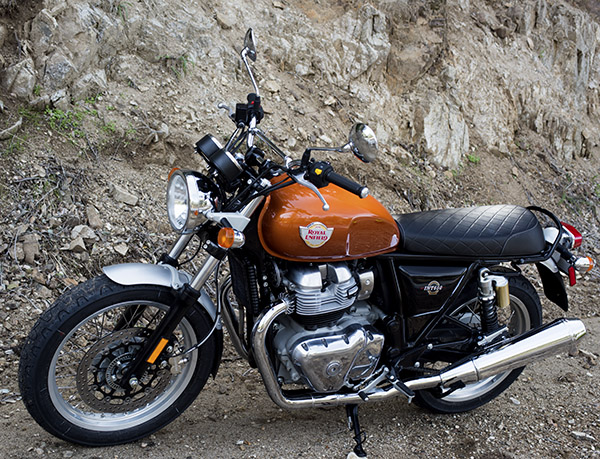
It was a glorious day up in the San Gabriels. Glendora Ridge Road is always a great ride.
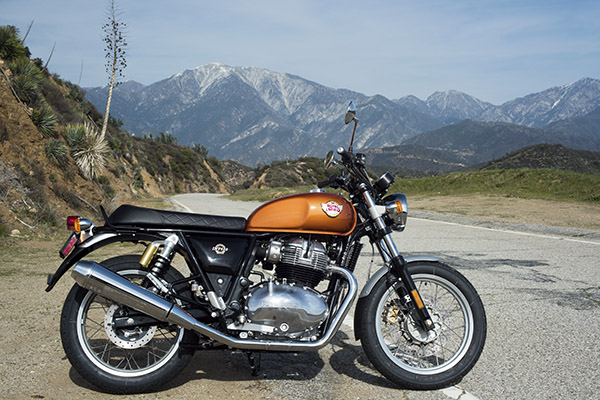
The new Enfield photographs well, I think. There are several colors available in this new model. I like the metalflake gold. It’s the same color as the test bike I rode in Baja and it makes for great photography.
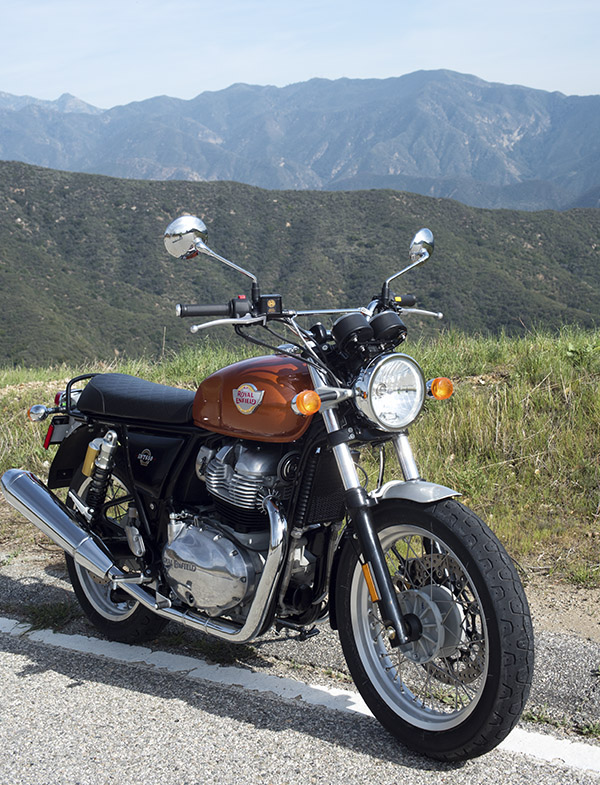
This next photo could be a magazine cover. There aren’t too many magazines out there any more. It’s nearly all online now, as Gresh and I know all too well. That’s a topic for another time. Back to my point: This next shot would make a hell of a magazine cover.
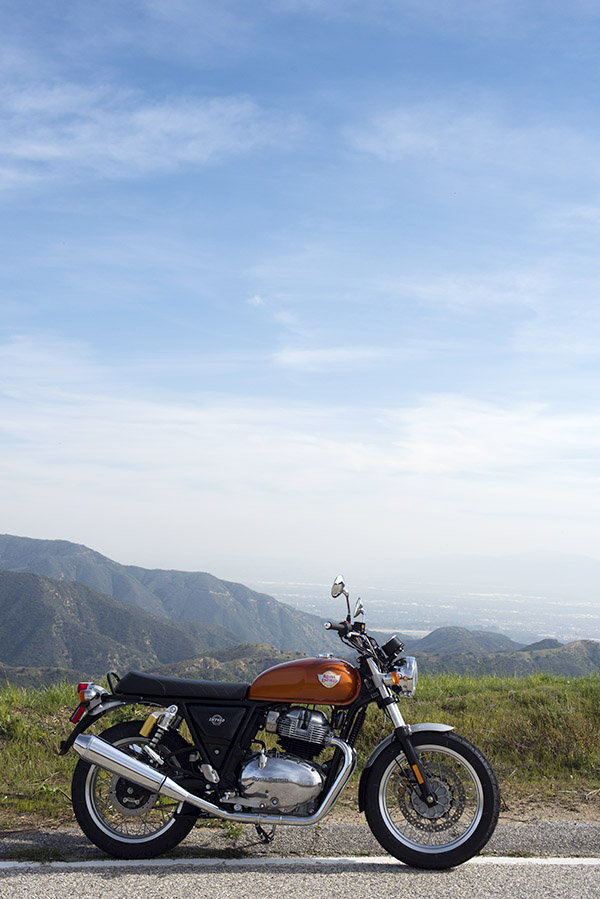
And finally, one more photo…my signature selfie. This one is yours truly in the Enfield’s starboard muffler.
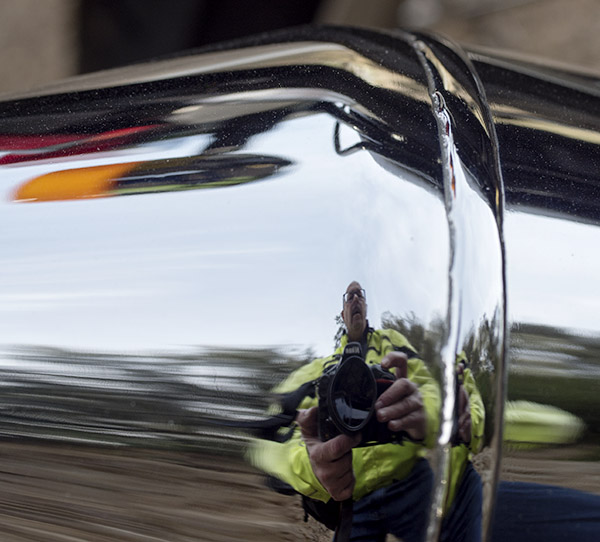
Glendora Ridge Road is a great road and a great place for breaking in a new motorcycle. A road with 234 curves in 12 miles…just what the doctor ordered for keeping the revs down and the shifts up. Click on that link above and you’ll learn more about GRR, and please do follow the ExNotes blog to learn more about the Enfield. I’ll be posting a lot on this bike. And I’ll still be posting stories about my CSC TT 250 and RX3, too. The right tool for the right job. They’re all great machines.
I may head over to Douglas Motorcycles later today; they’re having an Enfield open house and if I go I’ll grab a few more photos to share with you. There are other Enfield colors (they’re all beautiful), and they need me and my Nikon. The 24-120 lens and I hear them calling.
Hey, there are other Enfield owners out there. Let’s hear from you! Please add your comments to the blog. Folks want to hear what you have to say!
Do you feel lucky?
The year was 1971 and I was 20 years old. Those were the good old days. Movies were wildly entertaining, it was real easy to tell the good guys from the bad guys, movie stars kept their political opinions to themselves, and being politically correct hadn’t been invented yet. And the movies were better for it. To me, there’s one movie in particular that stands out: Dirty Harry.
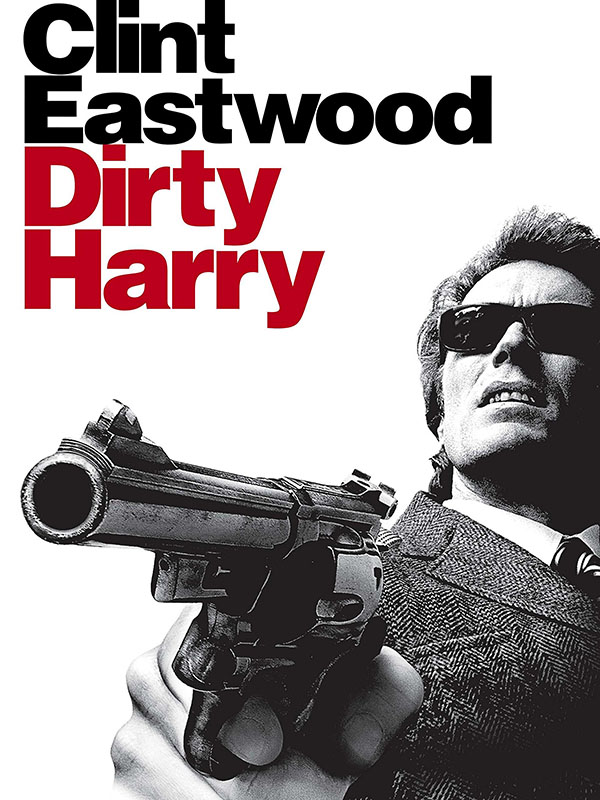
Dirty Harry was an exceptional movie for its time and it was an iconic role for Eastwood: Inspector Harry Callahan of the San Francisco Police Department. Eastwood went on to make several Dirty Harry movies. The Callahan role propelled Eastwood’s career enormously. But Callahan was only one of two stars in Dirty Harry. The other was Smith and Wesson’s Model 29 .44 Magnum revolver. Much as I like Clint Eastwood, I liked the Model 29 better, and yep, I bought a Model 29 after seeing Dirty Harry. I’ll get to that in a minute.
Susie and I were flipping through movies on Netflix a few nights ago and Dirty Harry was on the menu. “Put it on,” Sue said, with some resignation. “You know you want to watch it.” She was right. I did. Before I get into the Model 29 and all that, watch the video clip below. It’s a classic bit of tough guyism, and it’s a scene a lot of guys like me burned into our mental firmware.
So…back to the Model 29. Before Dirty Harry, Smith and Wesson didn’t quite know what to do with their Model 29. The police didn’t want it (the .44 Magnum is wildly overpowered as a police cartridge), nearly everyone who tried the cartridge back then took a pass, and the gun just kind of languished at the dealers. Oh, I know you read Elmer Keith and you’re a keyboard commando and all that, but let me tell you…in the ’50s (when the .44 Magnum was introduced) and on into the ’60s, nobody was buying them. The guns retailed in the mid-$150 range in those early years, but they just weren’t moving. Then Dirty Harry hit the big screen, and everything changed. Whaddaya know, everyone wanted a Model 29. I know. I was one of them. I was there.
You couldn’t find a Model 29 anywhere after Dirty Harry. It was product placement before anyone knew what product placement was, and all those N-frame Smiths gathering dust in dealer showcases vanished. In 1971 the MSRP for a new Model 29 was $183, but all that changed after Dirty Harry. They were going for $500 when you could find one on the used gun market, and that wasn’t very often. Everyone wanted to be Dirty Harry Callahan, including me. But I had an “in.” I had people. My father was an Olympic-class competitive trap shooter and he had contacts in the gun world. Dad put the word out and one of his buddies (a firearms wholesaler in south Jersey) had a brand new Model 29 (if I wanted it, he said) at the discounted price of $150. If I wanted it. Like I could say no. It’s good to know people, and I was in. Inspector Callahan, move over.
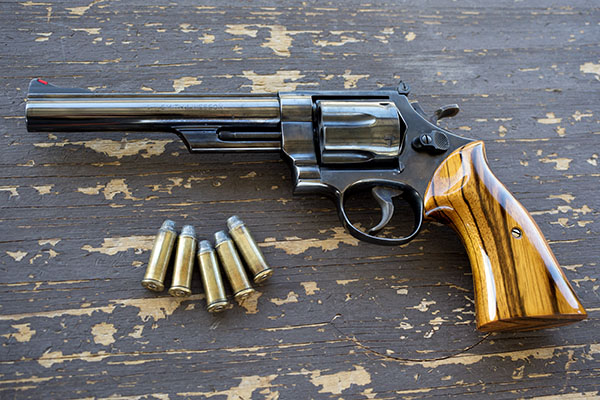
I shot the hell out of that Model 29 in New Jersey and then in Texas when I went in the Army, until it loosened up so much I didn’t want to shoot it any more. I put a notice up on a bulletin board at Fort Bliss and the next day an artillery captain bought it from me for, you guessed it, $500. I no longer owned a Model 29, but that was only a temporary situation. I reached out to my peeps back in New Jersey (it was my home of record and I was still a legal resident) and a week later I had another new Model 29. It’s the one I have today and the one you see in these photos.
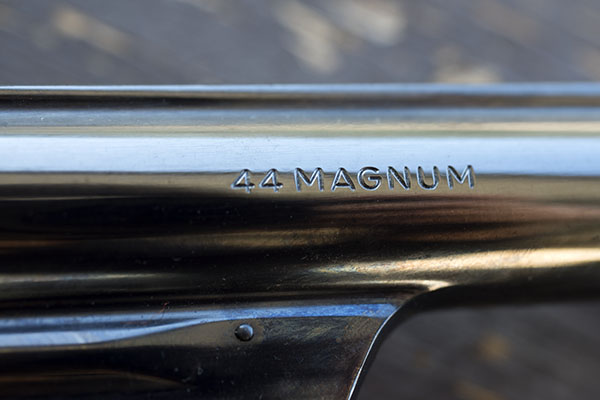
So when Sue and I watched Dirty Harry the other night, I realized it had been more than a few years since I shot my Model 29. I checked the ammo locker and I had some .44 Magnum ammo I had reloaded back in 2012. I dug the Model 29 out of the safe that evening, and the next day I was on the range. You know what? I still do a pretty good Dirty Harry. Inspector Callahan has nothing on me.
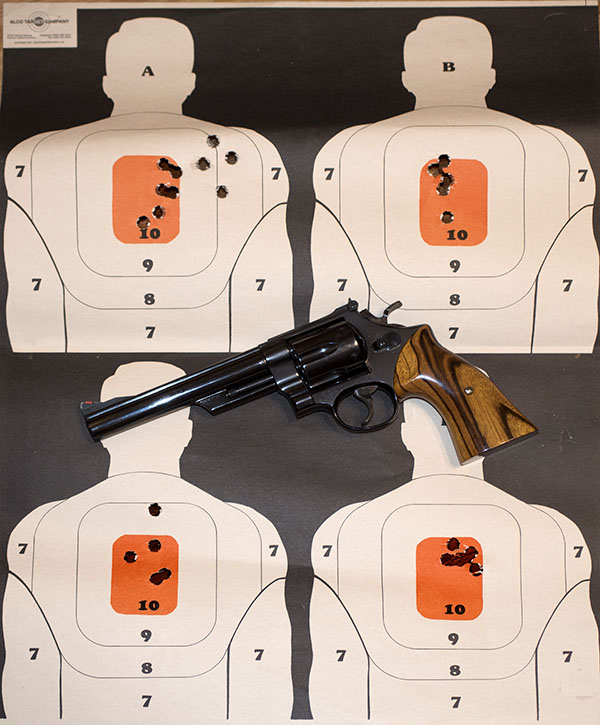
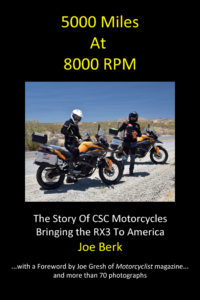 So back to that opening Dirty Harry scene…you know, the “Do you feel lucky, punk?” bit. It is classic Hollywood tough guy babble, but I had no idea of its reach until we had a bunch of Chinese guys come over from Zongshen to ride across the United States (you can and should read about that in 5000 Miles at 8000 RPM). We had a couple of days to kill before starting our epic journey, and when we asked the Chinese what they wanted to do, their answer was immediate: We want to shoot a gun. You know. ‘Murica, and all that. Hey, I was only too happy to oblige and we were off to the gun club. After sending a lot of lead downrange with a Ruger Mini 14, our Chinese guests then wanted to visit a gun store (the full American experience, you know), so we rolled over to Bass Pro.
So back to that opening Dirty Harry scene…you know, the “Do you feel lucky, punk?” bit. It is classic Hollywood tough guy babble, but I had no idea of its reach until we had a bunch of Chinese guys come over from Zongshen to ride across the United States (you can and should read about that in 5000 Miles at 8000 RPM). We had a couple of days to kill before starting our epic journey, and when we asked the Chinese what they wanted to do, their answer was immediate: We want to shoot a gun. You know. ‘Murica, and all that. Hey, I was only too happy to oblige and we were off to the gun club. After sending a lot of lead downrange with a Ruger Mini 14, our Chinese guests then wanted to visit a gun store (the full American experience, you know), so we rolled over to Bass Pro.
I was a little nervous because the Chinese like to take pictures (and guys like me don’t like anyone, especially foreigners, taking our pictures in gun stores). Our Chinese guests were cool when I told them to put their cameras away, but I need not have worried. The Bass Pro folks were intrigued by all of this when we walked in. They invited our Chinese guests to take all the photos they wanted, and then they allowed them to handle the guns. That was really cool. One of the Bass Pro sales dudes gave Hugo, the young Zongshen rep, a monstrous .500 Smith and Wesson revolver. The Chinese guys had their cameras on Hugo in a heartbeat as he handled that massive hand cannon. Hugo knew what to do. With a slight Chinese accent (but otherwise perfect English) he was transformed. Hugo became Dirty Harry:
I know what you guys are thinking. Did I fire six shots, or only five? Tell the truth, in all this excitement, I kind of lost track myself. What you need to ask yourself is: Do I feel lucky?
Well, do ya, punk?
Hugo was amazing and we all (me, the Chinese guys, and the Bass Pro staff) had a good laugh. Hugo was born on the other side of the world a good 30 years after Dirty Harry hit the big screen, but he knew that line perfectly. And he knew it was part of the whole Smith and Wesson schtick. I guess it’s no small wonder. It was both the opening and closing scenes of Dirty Harry. Take a look:
Me? I still have my Model 29, and I can still hit the target with it. I still feel lucky, too.
Check out our other Tales of the Gun stories here!

